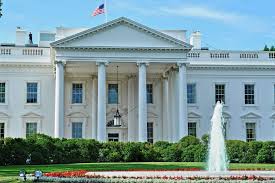Oil trades higher after US crude inventories register sharp fall, dollar caps gains; Brent at $83/bbl
Oil prices rebounded and traded higher on Wednesday, May 9, after the US oil storage data showed a larger-than-expected draw in crude stockpiles as refiners ramped up output ahead of the summer driving season. US crude inventories fell by 1.4 million barrels to 459.5 million barrels in the week ending May 3, according to the Energy Information Administration (EIA), rising more than analysts’ expectations.
Brent crude oil futures increased 52 cents, or 0.63 per cent, to $83.68 per barrel. US West Texas Intermediate crude futures rose 65 cents, or 0.83 per cent, to $79.03 per barrel. Coming to domestic prices, crude oil futures last traded 0.06 per cent higher at ₹6,589 per barrel on the multi commodity exchange (MCX).
What’s affecting crude oil prices?
-The EIA expects slower global oil demand growth for the year, a forecast report showed. Analysts said that stronger refining activity and exports have pushed a minor draw to crude inventories, helping unwind some of the last week’s large build. A strengthening US dollar limited crude oil prices.
-A stronger greenback dampens oil demand by making it more expensive for investors holding other currencies. Hopes of a ceasefire in Gaza have also put some downward pressure on oil prices in recent trading sessions, with some analysts saying the risk premium on oil had declined in tandem.
-Analysts also noted that taking away the current geopolitical trigger leaves the market staring into a world of sticky inflation in the world’s largest oil consumer, that is countered by interest rates that not only keep the US dollar elevated but make any sort of commodity trading more expensive
The US believes negotiations on a Gaza ceasefire should be able to close the gaps between Israel and Hamas. The US Central Intelligence Agency Director Bill Burns will travel to Israel on Wednesday for talks with the Israeli Prime Minister Benjamin Netanyahu and other top officials, as per Reuters.
-Morgan Stanley analysts said they see the geopolitical risk for oil prices dissipating as fears of further escalation in the conflict subside. Cautious expectations on supply cuts from the Organization of the Petroleum Exporting Countries and its allies (OPEC) ahead of a June 1 policy meeting also weighed on markets.
-Russian Deputy Prime Minister Alexander Novak said on Tuesday that there had been no discussions about an oil output increase by OPEC. This came after an earlier statement in the day in which he said the group had the option of increasing production, according to news agency Reuters.
Where are prices headed?
Oil traders largely looked past escalating tensions in the Middle East. EIA estimated a balanced market in 2024 as ongoing production from non-OPEC countries like US, Brazil will offset the cartel’s recent production cuts, according to Kaynat Chainwala, Senior Manager-Commodity Research, Kotak Securities.
Analysts noted that crude oil plummeted to $78 per barrel, marking its lowest point in over two months following reports that Russian Deputy Prime Minister Alexander Novak suggested OPEC+ might increase crude supply.
Investors are closely monitoring developments in the Middle East crisis, as Hamas has accepted a Gaza cease-fire plan while Israel persists with attacks in Rafah, citing dissatisfaction with the terms and pledging further negotiations.
Expectations suggest crude oil prices will continue to experience volatility. Support levels for crude oil stand at $77.70–77.00, with resistance anticipated at $79.10-79.90. In terms of INR, crude oil is expected to find support at Rs6,470-6,390 and resistance at ₹6,640-6,720,” said Rahul Kalantri, VP Commodities, Mehta Equities Ltd.
Disclaimer: The views and recommendations above are those of individual analysts, experts and broking companies, not of ThirtyTimes. We advise investors to check with certified experts before making any investment decisions.




